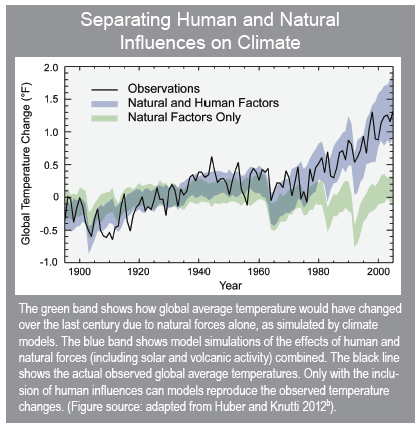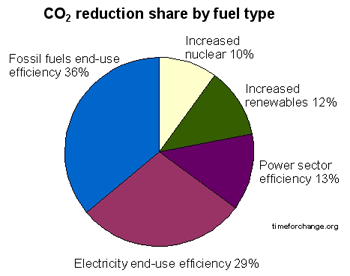 |
  |
|
About Mission 2018:
Please join us for the presentation of Mission 2018's proposal for a global energy portfolio for the next fifty years. OUR ENERGY FUTURE: CARBON, NUCLEAR, ALTERNATIVES Presented by students in Mission 2018 Wednesday, Dec. 3, 7-10 pm in Stata 32-123 reception following a Q & A session If you won't be able to join us in person, you can watch a live broadcast, accessible at the following link: http://webcast.amps.ms.mit.edu/fall2014/mission2018
Solving Complex Problems (12.000) is designed to provide students the opportunity to work as part of a team that proposes solutions to a complex, or “unsolveable”, problem that requires a strongly interdisciplinary approach. Over the past seven years we have focused on large problems related to the environmental health and sustainability of the planet. These included collapse of the global fisheries, access to clean fresh water in western North America, stemming the rise of greenhouse gases, feeding nine billion people, dealing with loss of biodiversity, the scarcity and distribution of strategic metals, and water security. Common to each problem is that almost all proposed solutions will cost enormous amounts of money and thus we must prioritize! This year we will focus on a serious problem: Our Energy Future.
 There is a broad concensus among scientists that humans are driving much of the global warming we have experienced in the past 50 years and that CO2 as well as other species are “greenhouse gases” that trap heat and are driving earth’s surface temperature higher. There is little doubt that much of this can be tied to consumption of fossil fuels (coal, oil, and gas) as well as large scale harvesting of forests both of which have caused CO2 concentrations to rise at an alarming rate. While there is debate over “natural variability” in temperatures caused by volcanic eruptions, astronomically driven climate variability, and even fluctuations in solar output, there is little question that the rapidly rising level of CO2 in our atmosphere is causing major environmental changes, from a reduction in glacial ice in mountains and the polar regions, to warming of the oceans. The demand for coal, oil, and gas continues to increase and despite intense efforts at reducing emissions, CO2 concentrations alone are now flirting with the 400 ppm level. There is a broad concensus among scientists that humans are driving much of the global warming we have experienced in the past 50 years and that CO2 as well as other species are “greenhouse gases” that trap heat and are driving earth’s surface temperature higher. There is little doubt that much of this can be tied to consumption of fossil fuels (coal, oil, and gas) as well as large scale harvesting of forests both of which have caused CO2 concentrations to rise at an alarming rate. While there is debate over “natural variability” in temperatures caused by volcanic eruptions, astronomically driven climate variability, and even fluctuations in solar output, there is little question that the rapidly rising level of CO2 in our atmosphere is causing major environmental changes, from a reduction in glacial ice in mountains and the polar regions, to warming of the oceans. The demand for coal, oil, and gas continues to increase and despite intense efforts at reducing emissions, CO2 concentrations alone are now flirting with the 400 ppm level.
Human population is rising and is estimated to exceed 9 billion by 2025. This in turn will drive the demand for energy and natural resources as the standard of living increases for much of the planet. Climate models are becoming increasingly sophisticated and predict that the excess greenhouse gases will cause the surface of the planet to become much warmer, ice volumes will shrink, sea-level will rise, precipitation pattern will shift, and the health of the oceans will be threatened.  We are at a critical juncture where the leading producers of greenhouse gases (USA, China, Russia) must take decisive action to reduce outputs. New power plant technologies have helped but coal consumption continues to rise off-setting many of the gains. While alternative energy sources are growing in significance and efficiency (wind, solar, hydro) they will likely never produce the baseline power needed to satisfy the demands of an increasingly industrialized world. Short term climate engineering solutions are not ideal but may become part of an integrated approach. We are at a critical juncture where the leading producers of greenhouse gases (USA, China, Russia) must take decisive action to reduce outputs. New power plant technologies have helped but coal consumption continues to rise off-setting many of the gains. While alternative energy sources are growing in significance and efficiency (wind, solar, hydro) they will likely never produce the baseline power needed to satisfy the demands of an increasingly industrialized world. Short term climate engineering solutions are not ideal but may become part of an integrated approach.
One way to dramatically reduce CO2 emissions is to rely much more heavily on nuclear power. While easy to discuss, the question remains, can it be done on a relatively short time-scale and can we start to replace our dependence on fossil fuels. A dramatic growth of nuclear power will require the world to come to grips with issues of nuclear security, nuclear waste, and radiation dangers when accidents occur.  Terrascope:Mission 2018 is also part of the Terrascope program and the issues associated with Our Energy Future, the year-long theme of Terrascope. By enrolling in 12.000 you become part of the Terrascope program and community, even if you do not continue in the Spring. See and hear what former students are saying about the program here.Spring Field Trip:During spring break in March of 2015 we will take a field trip to explore the problems and issues associated with the Mission 2018 theme. In the past, the location has involved international travel but ultimately depends on the directions you take in class and the nature of your solution. We will keep you updated.About 12.000:"Solving Complex Problems" (12.000) is a nine-unit, Fall-semester subject designed to provide freshmen with the opportunity to work as part of an "imagineering" team to design a viable solution to a complex problem that requires an interdisciplinary approach. This year it will be known as Mission 2018 - Our Energy Future. Each year's class explores a different problem in detail through the study of
complimentary case histories and the development of creative solution strategies.
It includes training in web site development, effective written and oral communication,
and team building. Initially developed with major financial support from the Alex
and Britt
d'Arbeloff Fund for Excellence in MIT Education, and now supported by the Dean for Undergraduate Education, 12.000 is designed to enhance the freshman experience by helping students develop contexts for other subjects in the sciences and humanities, and by helping them to establish learning communities that include upperclassmen, faculty, MIT alumni, and professionals in science and engineering fields. Each year's class explores a different problem in detail through the study of
complimentary case histories and the development of creative solution strategies.
It includes training in web site development, effective written and oral communication,
and team building. Initially developed with major financial support from the Alex
and Britt
d'Arbeloff Fund for Excellence in MIT Education, and now supported by the Dean for Undergraduate Education, 12.000 is designed to enhance the freshman experience by helping students develop contexts for other subjects in the sciences and humanities, and by helping them to establish learning communities that include upperclassmen, faculty, MIT alumni, and professionals in science and engineering fields.Why Mission?The Mission class offers freshman a completely different way to learn. In contrast to the core classes that rely on lectures and problem sets, Mission attempts to teach students how to think about solving complex problems. Students in Mission are independent, largely self-directed, and interactive. They learn how to build teams and develop solutions that require teamwork between scientists and engineers including economics and social sciences. Mission students will learn that many problems are just too big and complex to be solved by any one person or discipline and must involve integration. At the end of the class the students of Mission will have developed new and innovative solutions to an "unsolvable" problem and been exposed to a variety of different disciplines. Unlike any other class open to freshman, we treat you as capable science and engineering researchers from Day 1 and our expectation is for you to produce a plan that will attract the attention of people from around the world. Websites developed for past Missions still elicit questions and comments from around the world years after they were posted.History of the ClassMission, or 12.000, was offered first in Fall 2000, when the assignment (Mission 2004) was to develop a viable mission plan for the exploration of Mars with the aim of finding evidence for the present or past existence of life. The assignment for Fall 2001 (Mission 2005) was to design undersea research stations for both coral reef and abyssal environments. Fall of 2002 (Mission
2006) charged students
with developing a strategy for monitoring and preserving the Amazon Rainforest.
As in previous years, the students in Mission 2006 described their final design
in a content-rich web site and an oral presentation in front of a panel of international
experts. Mission
2007 was focused on Arctic National Wildlife Refuge (ANWR),
Mission
2008 -
Galapagos, Mission
2009 -Tsunamis and Mission
2010 - Saving N'awlinz, Mission
2011 - Saving our oceans, Mission 2012 - Clean water-assuring clean fresh water for western North America, Mission 2013 - CO2 sequestration, and Mission 2014, Feeding the World, Mission 2015, Whole Earth Triage - Securing the future of biodiversity, Mission 2016, The Future of Strategic Resources, and Mission 2017, Water Security. Fall of 2002 (Mission
2006) charged students
with developing a strategy for monitoring and preserving the Amazon Rainforest.
As in previous years, the students in Mission 2006 described their final design
in a content-rich web site and an oral presentation in front of a panel of international
experts. Mission
2007 was focused on Arctic National Wildlife Refuge (ANWR),
Mission
2008 -
Galapagos, Mission
2009 -Tsunamis and Mission
2010 - Saving N'awlinz, Mission
2011 - Saving our oceans, Mission 2012 - Clean water-assuring clean fresh water for western North America, Mission 2013 - CO2 sequestration, and Mission 2014, Feeding the World, Mission 2015, Whole Earth Triage - Securing the future of biodiversity, Mission 2016, The Future of Strategic Resources, and Mission 2017, Water Security. |
  |